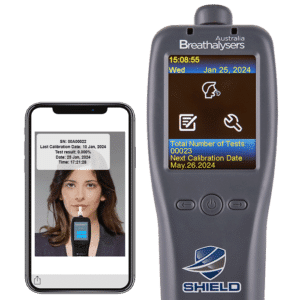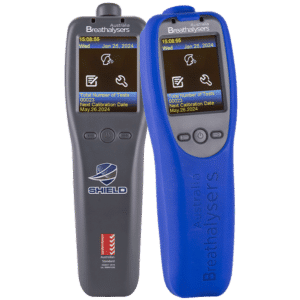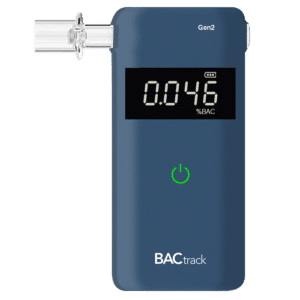Beating a Breathalyzer: Is It Really Possible?
27 November, 2023

Police officers utilise a breathalyzer to measure Blood Alcohol Concentration (BAC). However, there have been persistent myths about ways to fool these devices and escape legal repercussions, like drink driving penalties. With the potential consequences of the charges, people are curious if beating a breathalyzer is possible. The answer to this question is no because breath testers are reliable. However, several factors can increase and decrease alcohol levels.
Breath testing is an important tool for law enforcement. This is because it can quickly and accurately assess if a driver is impaired by alcohol. The use of a breathalyzer machine is beneficial because it allows authorities to get a reading without the need for blood draws or urine samples. The following sections will present the facts and myths of beating a breath tester, understanding the BAC levels, and factors that affect the outcomes of breath tests.
Facts vs Myths About Beating a Breathalyzer
Law enforcement officers use a breathalyser to identify drivers suspected of intoxication. While these devices are generally reliable, there are some misconceptions surrounding them. One common myth about beating a breathalyzer is that sucking on a penny can alter the results, which is false. Such action may instead interfere with the accuracy of the test, resulting in potential legal consequences.
Another prevalent myth is that consuming coffee or engaging in vigorous exercise can quickly reduce alcohol levels. However, scientific evidence do not support these ideas. The only way to lower BAC levels is to allow the body time to metabolise the alcohol naturally. Caffeine and physical activity can help people feel more alert. However, they do not speed up the elimination of alcohol from the system.
A final myth worth debunking is the belief that breathalyzer results can be easily challenged in court. While it is true that breathalyzer accuracy can be subject to scrutiny in legal proceedings, it is not as easy to dismiss such evidence as commonly believed. Challenging the results requires solid scientific evidence and expert testimony. This can be an arduous task for a defence.
Summary of the Common Myths
- Eating mints can fool a breathalyzer. Although these may temporarily mask alcohol odour, they do not affect the accuracy of the breath tester in detecting alcohol levels in the blood.
- Holding breath or hyperventilating before blowing into a breathalyzer can alter the results. However, this practice has no impact, as it measures deep lung air, not just surface air.
- Drinking energy drinks can sober a person up quickly. Caffeinated beverages do not reduce BAC or speed up the metabolism of alcohol.
- Burping before submitting to a tester can lower the reading. Contrary to popular belief, this does not eliminate alcohol from the system.

Beating a Breathalyzer – Understanding Blood Alcohol Content (BAC)
Beating a breathalyzer is not possible, but there are ways to reduce the chances of registering a high BAC. Thus, understanding how alcohol content works is crucial. BAC is a measure of alcohol in the bloodstream. It is calculated in terms of the weight of alcohol in a certain volume of blood. The device usually expresses it as a percentage. Knowing BAC levels can assist individuals in making responsible choices regarding alcohol consumption and driving.
Breathalyzers work on the principle of measuring the alcohol concentration in the breath. This is assumed to be proportional to that in their blood. Breathing into the device estimates the BAC levels by analysing the alcohol molecules in the breath.
Some people seek ways to bypass a breathalyzer. However, prioritising safety and responsibility is essential. Engaging in tricks to beat the tester is not only risky but also illegal. There is no proven way to lower BAC quickly or make them undetectable. The only foolproof method to avoid drink driving is to refrain from consuming alcohol entirely. Moreover, they can wait an adequate amount of time for the body to metabolise the alcohol.
Calculating Your BAC
BAC is typically measured in terms of grams of alcohol per 100 millilitres of blood. To calculate the BAC, know the alcohol content of the beverages. People can find this on the label as a percentage or proof. Next, multiply the alcohol content by the volume consumed to get the total number of grams of alcohol consumed.
Then, divide this value by the body weight to determine the grams of alcohol per kilogram. Finally, individuals can use a BAC chart or online calculator that considers additional factors to estimate BAC accurately. Remember that this is only an estimation, and individual tolerances may vary.

Beating a Breathalyzer: Factors that Affect BAC
Indeed, beating a breathalyzer is not possible. Nevertheless, several factors can affect the accuracy of BAC readings. Firstly, the amount of alcohol intake can influence the outcome of a breath test. Excessive alcohol intake in a short period can lead to inaccurate results. This is because it takes time for the body to metabolise and eliminate alcohol.
Secondly, the lung capacity of a person can affect BAC levels. People with larger lung capacities may have a lower BAC reading compared to those with smaller lung capacities who may register a higher BAC. This is because a breathalyzer assumes that the ratio of alcohol in the breath to alcohol in the blood is consistent for everyone.
Lastly, the amount of time between the last drink and the breathalyzer test is an element that influences breath alcohol levels. The body eliminates alcohol at a fairly predictable rate of about 0.015 BAC per hour. If a person has already metabolised a significant amount of alcohol before the test, their reading may be lower than their actual BAC.
The Legal Limits for BAC
The legal limits for BAC vary depending on the location. In New Zealand, it is 0.05%. Going over this limit can lead to serious consequences. This includes hefty fines and jail time. It is therefore important to understand the limits and take precautions to ensure that individuals do not exceed them.
However, it is essential to emphasise that even if the BAC is below the legal limit, authorities can still charge people with driving under the influence (DUI) if their driving is visibly impaired. This is because alcohol affects individuals differently, and some drivers may experience significant impairment at lower BAC levels.
Conclusion
Beating a breathalyzer is not possible and is not recommended. The testers are accurate in determining the alcohol content in the body. Any attempts to fool the machine can lead to serious consequences. The best advice for anyone facing a breath test is to remain sober. This is the only sure way of passing it. Moreover, people should understand how BAC works since several factors affect the breathalyzer readings. Some elements may produce false positives.
The presence of alcohol in the body can impair judgement and motor skills. In addition, it increases the risk of injuries or death. It is important to understand the implications of drink driving and stay away from it. Having a personal breathalyzer can help keep track of alcohol levels before and after drinking. Individuals can buy online or in-store. They can check BACtrack from Breathalysers New Zealand for portable breathalyzer options.






























